
In a country as large and diverse as the United States, not all areas are equal when it comes to raising children. While the number of factors that can affect a child’s development is seemingly limitless, there are a few core measures related to safety, school district quality, and amenities that can make all the difference between one area and another. And in some parts of the country, children are at a considerable disadvantage.
24/7 Wall St. created an index to identify the 25 worst U.S. metro areas in which to raise a child. All but two cities on this list are located in the either the western or southern United States.
The ideal city in which to raise children should be safe and have quality schools and plenty of recreational amenities. Only metro areas with some combination of high violent crime rates, low preschool enrollment rates, low high school graduation rates, and limited access to parks and recreation centers made this list.
Relatively violent cities with fewer amenities and worse educational outcomes also often tend to be relatively poor. In 21 of the 25 cities on this list, the child poverty rate is higher than the 20.7% U.S. rate.
Serious financial hardship is likely partially the result of poor economic conditions. As of June 2017, the unemployment rate was higher than the 4.4% U.S. jobless rate in 18 of the 25 cities on this list.
Likely due in part to the low desirability of many of the cities on this list, home values in these areas are relatively low. In 21 of the 25 cities on this list, the median home value is less than the typical American home value of $194,500.
Click here to see the 25 worst cities to raise children.
Click here to see our methodology.

25. Jackson, TN
> Pre-school enrollment: 33.3%
> Graduation rate: 92.5%
> Pop. with access to areas for activity: 65.3%
> Violent crime rate: 735 per 100,000
Early education can be critical to a child’s social and cognitive development, and only one-third of 3 and 4-year olds in the Jackson metro area are enrolled in preschool. This is a smaller share than in the majority of U.S. metro areas and well below the 47.6% enrollment rate nationwide. In addition to a low early childhood enrollment rate, school districts in Jackson may be underfunded. For example, the Jackson-Madison Consolidated School District spends only about $8,800 per pupil a year. In comparison, the average U.S. school district spends about $10,700 per pupil annually.
[in-text-ad]

24. Medford, OR
> Pre-school enrollment: 18.1%
> Graduation rate: 75.0%
> Pop. with access to areas for activity: 83.6%
> Violent crime rate: 324 per 100,000
Many of the worst metro areas for children are in the West — and Medford, Oregon is one of them. A solid educational base can be a necessity for a healthy, successful life, and in Medford, only 75% of high school students graduate on time, well below the 83% U.S. graduation rate. Similarly, only 18.1% of 3 and 4-years olds in the area are enrolled in preschool, well below the 47.6% U.S. enrollment rate.

23. Texarkana, TX-AR
> Pre-school enrollment: 32.2%
> Graduation rate: 89.7%
> Pop. with access to areas for activity: 53.0%
> Violent crime rate: 469 per 100,000
Access to parks and recreation centers can make it easier to maintain an active, healthy lifestyle — especially when it comes to children. In Texarkana, only about half of the population has adequate access to such amenities, one of the smallest shares among U.S. metro areas.
Many families in Texarkana also face serious financial hardship. More than 1 in 4 children in the metro area live below the poverty line, compared to only about 1 in 5 children nationwide.
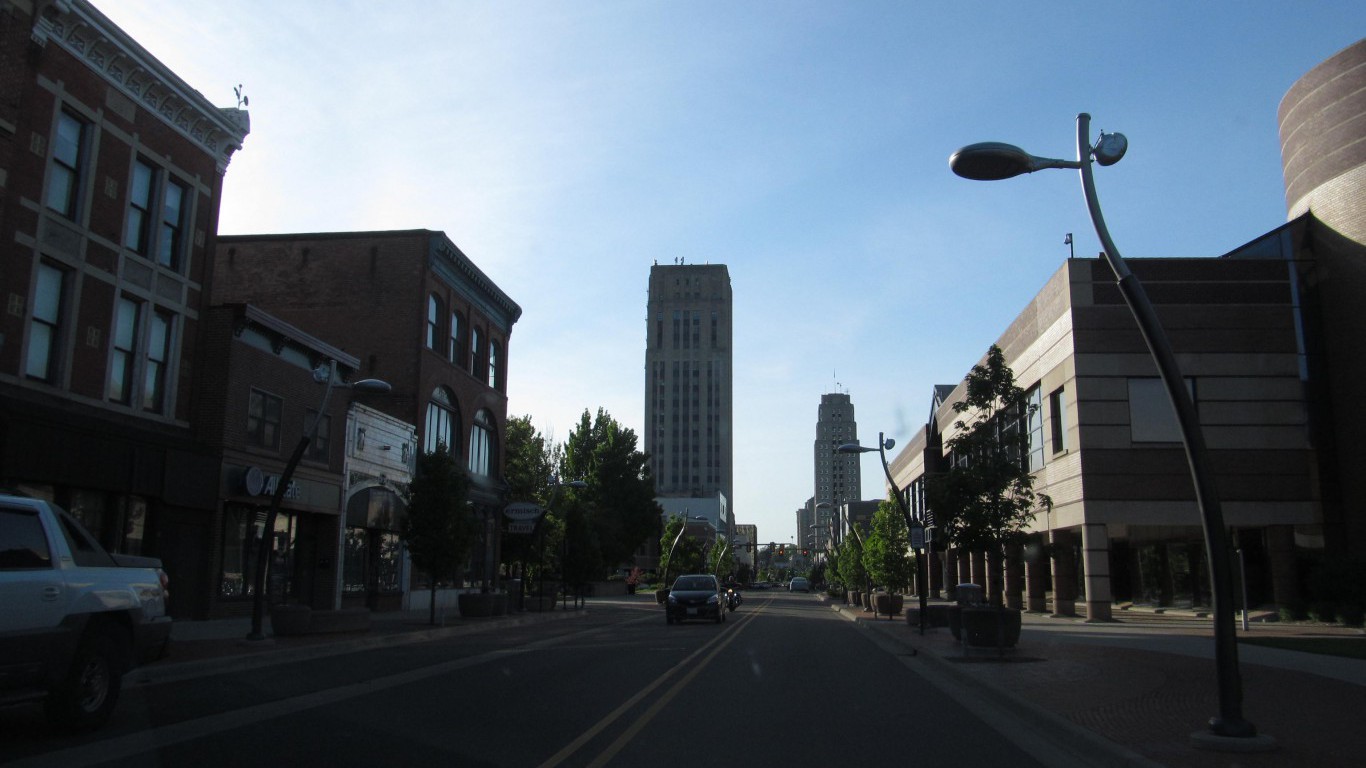
22. Battle Creek, MI
> Pre-school enrollment: 43.4%
> Graduation rate: 74.9%
> Pop. with access to areas for activity: 70.3%
> Violent crime rate: 559 per 100,000
Battle Creek is one of only two metro areas in the Midwest to rank among the worst places to raise children. Approximately 3 in every 4 high school students in the Michigan metro area graduate on time — well below the 83% graduation rate nationwide. The metro area is also relatively dangerous. There were 559 violent crimes for every 100,000 residents in 2015, well above the 373 per 100,000 violent crime rate nationwide.
[in-text-ad-2]

21. Charleston, WV
> Pre-school enrollment: 26.7%
> Graduation rate: 86.0%
> Pop. with access to areas for activity: 66.7%
> Violent crime rate: 530 per 100,000
The metro area around West Virginia’s capital city is one of the worst in the country in which to raise children. Only about two-thirds of the Charleston population has access to places for physical activity such as parks or recreation centers — well below the 84% share of Americans nationwide. While an inactive lifestyle can hinder a child’s physical development, inadequate access to early childhood education can hamper cognitive development. Only 26.7% of 3 and 4-year olds in the area are enrolled in preschool, well below the 47.6% share of 3 and 4-year olds nationwide.

20. Memphis, TN-MS-AR
> Pre-school enrollment: 39.9%
> Graduation rate: 85.9%
> Pop. with access to areas for activity: 81.5%
> Violent crime rate: 1,038 per 100,000
The graduation and preschool enrollment rates in Memphis are higher than in the majority of metro areas on this list. However, there were 1,038 violent crimes — murder, rape, robbery, and aggravated assault — for every 100,000 metro area residents in 2015. With a violent crime rate nearly three times the comparable national figure, Memphis is one of the most dangerous cities in the United States.
[in-text-ad]

19. Sebring, FL
> Pre-school enrollment: 31.1%
> Graduation rate: 64.0%
> Pop. with access to areas for activity: 86.2%
> Violent crime rate: 342 per 100,000
Only 64% of high school students in Sebring, Florida graduate on time — one of the smallest such shares of any U.S. metro area. Though the connection between school spending and educational outcomes is complex, area students may benefit from greater investment. The Highlands County School District spends only about $9,000 per student a year, $1,700 less than is typical nationwide.

18. Yakima, WA
> Pre-school enrollment: 30.1%
> Graduation rate: 73.1%
> Pop. with access to areas for activity: 69.3%
> Violent crime rate: 293 per 100,000
Early education programs can be critical for the cognitive development of children. Similarly, easy access to recreation centers and parks can be a considerable advantage for children’s physical development. In the Yakima metro area, only 30.1% of 3 and 4-year olds are enrolled in preschool — well below the 47.6% share of children the same age nationwide. Similarly, only 69.3% of the metro area population has access to places for physical activity like parks and recreation centers, well below the 84.0% share of Americans nationwide.
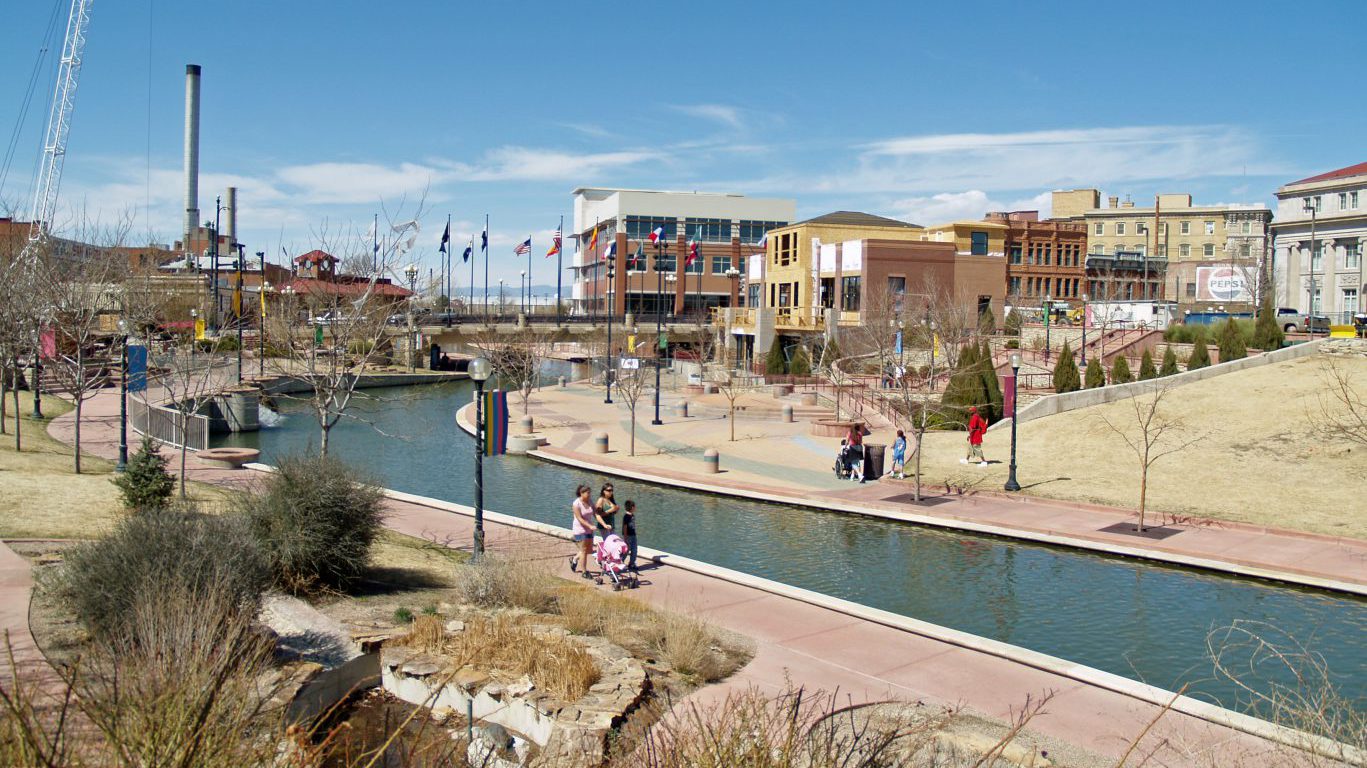
17. Pueblo, CO
> Pre-school enrollment: 39.8%
> Graduation rate: 74.9%
> Pop. with access to areas for activity: 74.6%
> Violent crime rate: 616 per 100,000
Low graduation rates are often an indication of a substandard school district. In the Pueblo, Colorado metro area, only about 75% of high school students graduate on time — well below the comparable 83% U.S. graduation rate. One explanation for the poor outcomes in the area’s public schools may be a lack of funding. The Pueblo County School District 70 spends only about $7,300 per pupil annually, or $3,400 less than the typical expenditure across all U.S. public schools.
[in-text-ad-2]

16. Pensacola-Ferry Pass-Brent, FL
> Pre-school enrollment: 28.1%
> Graduation rate: 73.0%
> Pop. with access to areas for activity: 81.8%
> Violent crime rate: 507 per 100,000
Less than 3 in every 4 high school students in the Pensacola metro area graduate on time — compared to more than 4 out of 5 high school students nationwide. Though the relationship between school spending and educational outcomes is complex, public schools in the area may benefit from greater funding. The Escambia County School District, which serves some 40,750 students in the area, spends only about $8,400 per pupil a year, or $2,300 less than is typical nationwide.

15. Hanford-Corcoran, CA
> Pre-school enrollment: 38.9%
> Graduation rate: 83.0%
> Pop. with access to areas for activity: 51.5%
> Violent crime rate: 464 per 100,000
One of the most important aspects of early child development is play and exercise. In the Hanford-Corcoran metro area, just 51.5% of the population has access to locations for physical activity, one of the smallest shares in the country. Hanford-Corcoran also lags behind the rest of the country in several measures of education and safety. Just 38.9% of 3 and 4-year-olds are enrolled in preschool, less than the 47.6% national share. Additionally, there were 464 violent crimes reported per 100,000 residents in Hanford-Corcoran in 2015, far more than the U.S. rate of 373 violent crimes per 100,000 Americans.
[in-text-ad]

14. Gadsden, AL
> Pre-school enrollment: 48.5%
> Graduation rate: 84.1%
> Pop. with access to areas for activity: 44.0%
> Violent crime rate: 532 per 100,000
Gadsden is the worst metro area in Alabama and among the worst in the country in which to raise children. Access to parks and recreation centers can increase the likelihood of regular physical activity, which is especially important for a child’s physical development. Only 44% of Gadsden residents have such access, the second smallest share of any metro area considered. Violent crime is also more common in Gadsden than it is on average nationwide.

13. Rocky Mount, NC
> Pre-school enrollment: 33.4%
> Graduation rate: 82.0%
> Pop. with access to areas for activity: 53.0%
> Violent crime rate: 423 per 100,000
Preschool can be beneficial for children’s cognitive and social development, and in Rocky Mount, North Carolina, parents are far less likely to enroll their 3 and 4-year olds in preschool programs. Only about a third of all children this age in the metro area are in preschool, well below the 47.6% share of children nationwide.
Metro area schools may also be underfunded. The Nash-Rocky Mount school district spends only about $8,400 per pupil annually, about $2,300 less than is typical nationwide.

12. Las Vegas-Henderson-Paradise, NV
> Pre-school enrollment: 33.1%
> Graduation rate: 72.0%
> Pop. with access to areas for activity: 91.0%
> Violent crime rate: 815 per 100,000
Frequent violent crime and poor educational outcomes make the Las Vegas metro area one of the worst places to raise children in the United States. There were 815 violent crimes reported per 100,000 residents in Las Vegas in 2015, more than twice the national rate of 373 incidents per 100,000 Americans. Just one-third of 3 and 4-year olds in the metro area are enrolled in preschool, compared to nearly one-half of children this age nationwide. Just 72.0% of Las Vegas high schoolers graduate in four years, one of the lowest graduation rates of any city nationwide.
[in-text-ad-2]

11. Lawton, OK
> Pre-school enrollment: 35.5%
> Graduation rate: 78.8%
> Pop. with access to areas for activity: 64.1%
> Violent crime rate: 744 per 100,000
Most of the worst metro areas in which to raise children are in the South — and Lawton, Oklahoma is one of them. The metro area’s violent crime rate of 744 incidents for every 100,000 residents is nearly double the comparable U.S. crime rate.
In addition to safety, quality school systems are an important consideration when deciding where to raise children. Children in the Lawton metro area are less likely to be enrolled in preschool or graduate high school on time than children across the country as a whole.
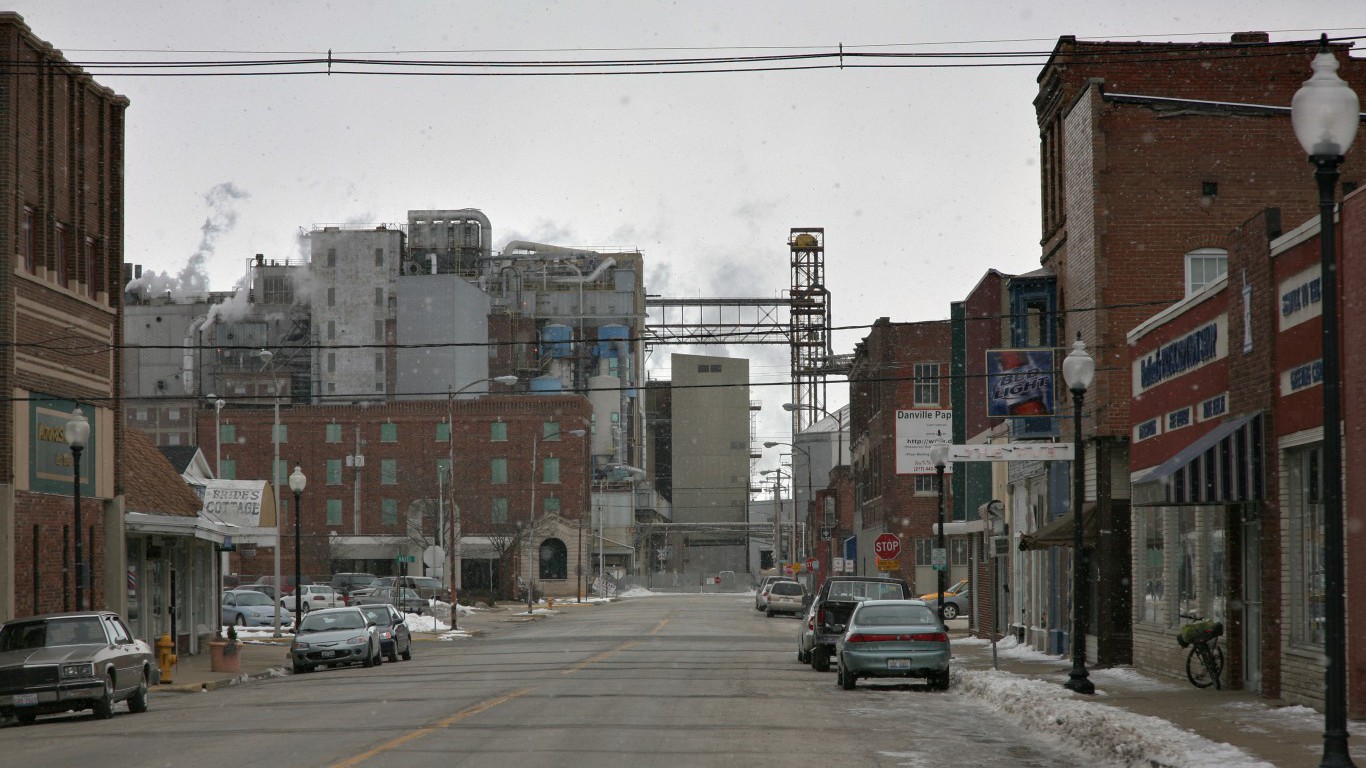
10. Danville, IL
> Pre-school enrollment: 36.1%
> Graduation rate: 78.7%
> Pop. with access to areas for activity: 65.6%
> Violent crime rate: 780 per 100,000
A relatively dangerous place, Danville, Illinois’ violent crime rate of 780 incidents of murder, rape, robbery, and aggravated assault for every 100,000 residents is more than double the corresponding national rate. High crime can be closely tied to poor economic conditions, and in Danville, 6.7% of the labor force is unemployed, one of the higher unemployment rates among U.S. metro areas.
Likely due in part to an inadequate job market, 27.8% of area children live in poverty, well above the 20.7% U.S. child poverty rate.
[in-text-ad]
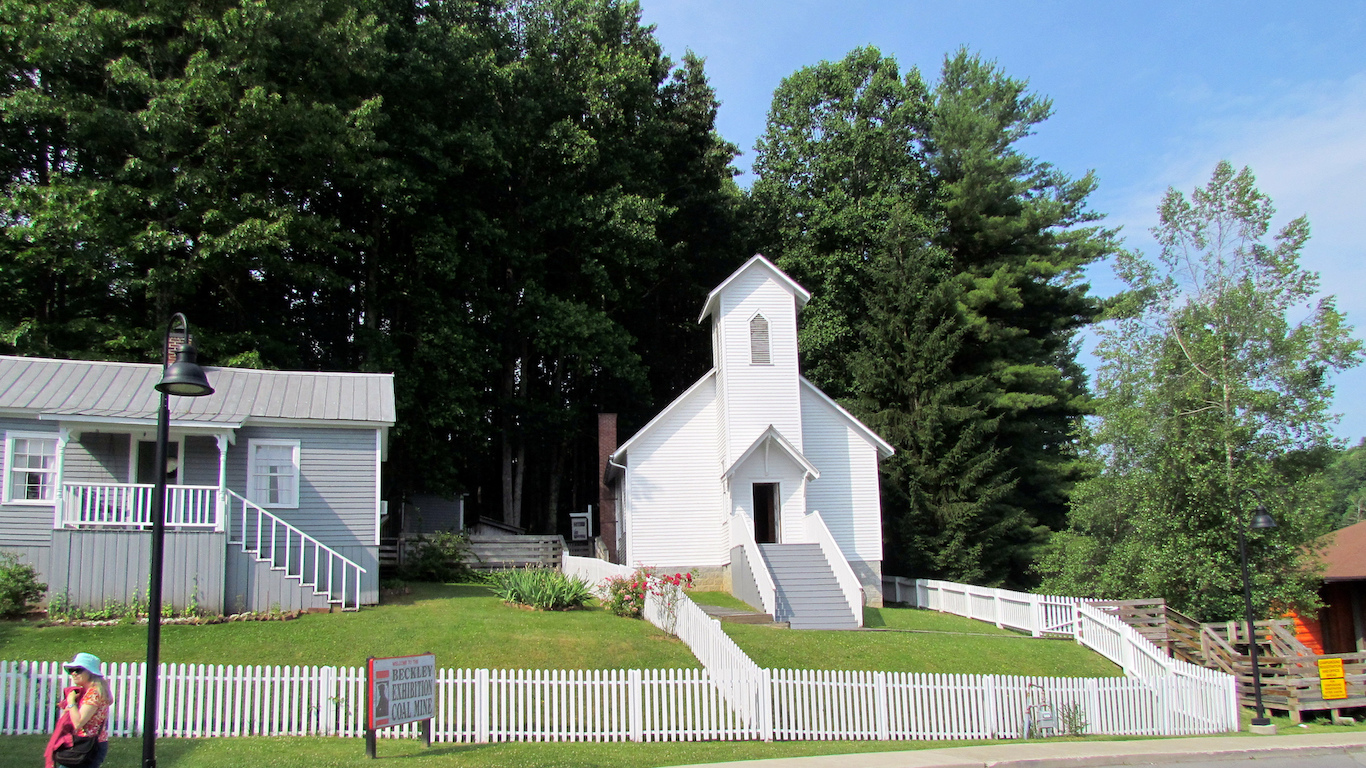
9. Beckley, WV
> Pre-school enrollment: 26.9%
> Graduation rate: 83.0%
> Pop. with access to areas for activity: 47.2%
> Violent crime rate: 440 per 100,000
Access to parks and recreation centers can promote more active and healthier lifestyles. Relatively few Beckley, West Virginia residents can take advantage of such amenities as only 47.2% of the population has easy access to venues for physical activity, well below the 84.0% share of Americans nationwide.
Children in Beckley are also more likely to face serious financial hardship and less likely to receive preventative medical care than most. Some 25.7% of area children live in poverty and 11.7% are without health insurance, well above the respective 20.7% and 4.8% national shares.
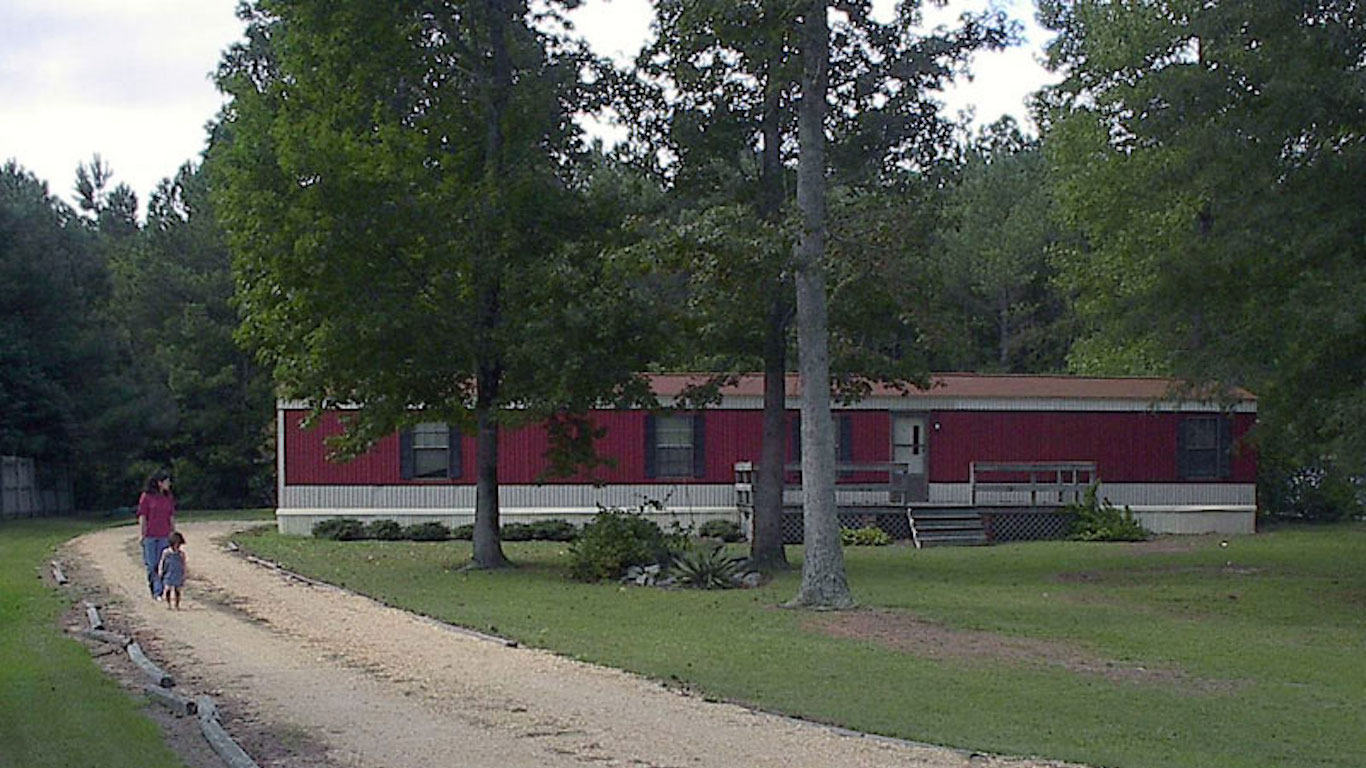
8. Goldsboro, NC
> Pre-school enrollment: 23.2%
> Graduation rate: 85.0%
> Pop. with access to areas for activity: 48.5%
> Violent crime rate: 494 per 100,000
Access to places for physical activity such as parks or recreation centers can increase the likelihood of area children being physically active and healthy. In the Goldsboro metro area, less than half of the population has access to such facilities, one of the smallest shares of any city nationwide. Area children are also more likely to lack health insurance and live in poverty than children nationwide.
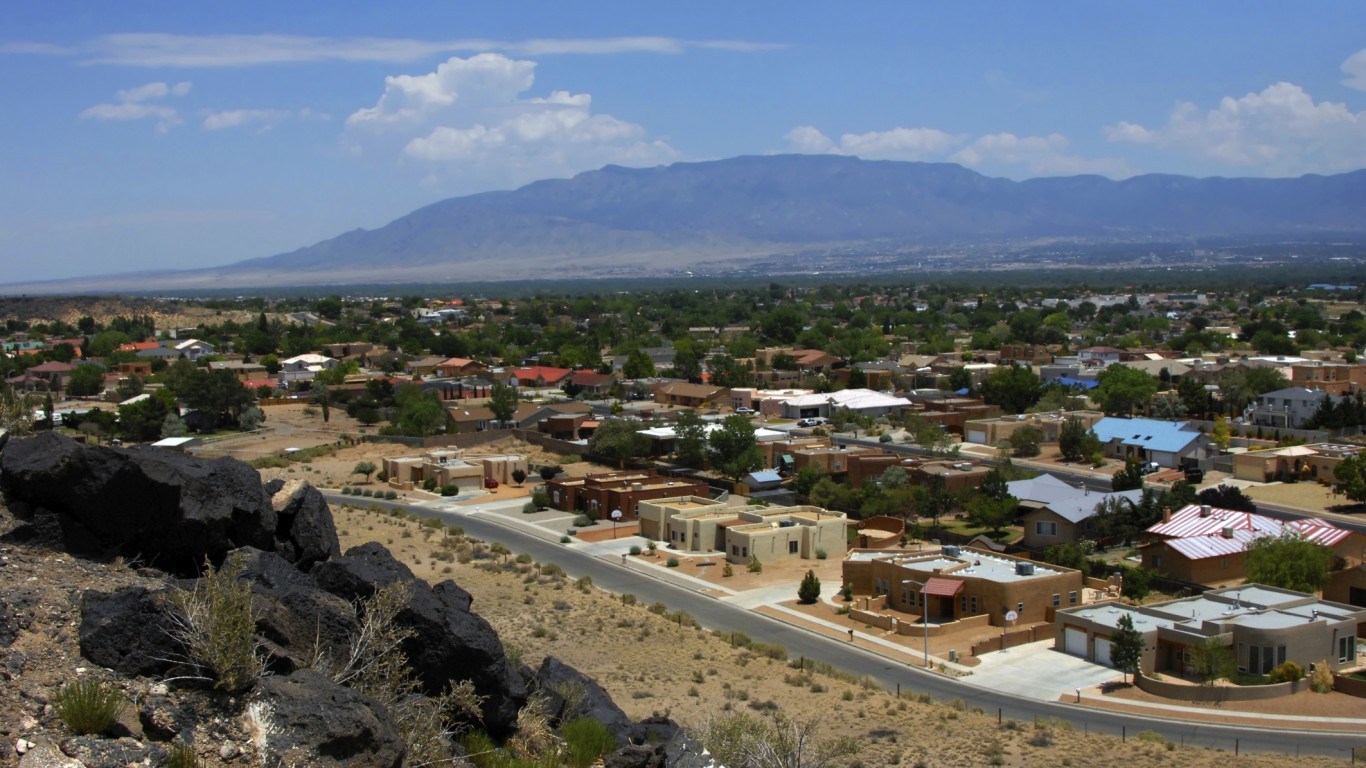
7. Albuquerque, NM
> Pre-school enrollment: 40.9%
> Graduation rate: 62.0%
> Pop. with access to areas for activity: 85.0%
> Violent crime rate: 793 per 100,000
Albuquerque high school students are among the least likely in the country to graduate on time. Albuquerque’s 62% graduation rate is the lowest among U.S. metro areas and well below the 83% U.S. graduation rate.
In addition to struggling schools, the metro area also has a crime problem. There were 793 violent crimes for every 100,000 Albuquerque metro area residents in 2015, more than double the comparable U.S. violent crime rate.
[in-text-ad-2]

6. Monroe, LA
> Pre-school enrollment: 46.2%
> Graduation rate: 81.6%
> Pop. with access to areas for activity: 66.9%
> Violent crime rate: 1,160 per 100,000
With 1,160 violent crimes — murder, rape, robbery, and aggravated assault — for every 100,000 residents, Monroe, Louisiana is the most dangerous metro area in the country. Like many parts of the country with high crime, Monroe is a relatively poor city. More than 1 in every 10 families lives on less than $10,000 a year — more than double the comparable share nationwide. Additionally, 35% of area children live in poverty, the 12th highest child poverty rate among U.S. metro areas.

5. Odessa, TX
> Pre-school enrollment: 42.7%
> Graduation rate: 77.8%
> Pop. with access to areas for activity: 71.4%
> Violent crime rate: 1,070 per 100,000
Odessa is the worst metro area in Texas in which to raise a child and the fifth worst nationwide. There were 1,070 violent crimes in Odessa in 2015 for every 100,000 residents, the second most of any U.S. metro area. Not only is Odessa dangerous, but also many area children do not likely receive regular and necessary medical care. Some 16% of children in Odessa lack health insurance, the third highest child uninsured rate among U.S. metro areas.
[in-text-ad]

4. Hammond, LA
> Pre-school enrollment: 41.2%
> Graduation rate: 74.0%
> Pop. with access to areas for activity: 61.7%
> Violent crime rate: 769 per 100,000
In addition to being critical for health, play and recreation are important for a child’s emotional, social, and cognitive development. Just 61.7% of the Hammond population has access to locations for physical activity such as parks and gyms, one of the smallest shares nationwide. Violent crime can also hinder outdoor recreation. There were 769 violent crimes reported per 100,000 Hammond residents in 2015, more than twice the national violent crime rate.
Hammond also has some of the worst educational outcomes of any metro area. Just 74.0% of high schoolers in Hammond graduate within four years, far less than the 83.0% national rate.

3. Anchorage, AK
> Pre-school enrollment: 31.4%
> Graduation rate: 79.9%
> Pop. with access to areas for activity: 75.8%
> Violent crime rate: 1,040 per 100,000
According to the Annie E. Casey Foundation, Alaska is one of only two states where preschool enrollment has declined over the past decade. Funding for the state’s preschool program has remained flat in recent years, and today just 31.4% of 3 and 4-year olds in Anchorage are enrolled in preschool — far less than the 47.6% national rate.
An unsafe neighborhood can hinder child development. There were 1,040 violent crimes reported per 100,000 residents in Anchorage in 2015, nearly three times the national violent crime rate of 373 violent crimes per 100,000 Americans.

2. Farmington, NM
> Pre-school enrollment: 48.7%
> Graduation rate: 71.8%
> Pop. with access to areas for activity: 36.4%
> Violent crime rate: 443 per 100,000
Play and recreation are critical to children’s emotional, social, and cognitive development, as well as their physical fitness. In the Farmington metro area, just 36.4% of residents have access to locations for physical activity, the smallest share in the country.
The Farmington Municipal School District spends an average of $8,616 per pupil a year on education, far less than the $10,724 national average. Low education spending may hinder educational outcomes in the metro area. Just 71.8% of Farmington high schoolers graduate within four years, one of the lowest graduation rates of any city.
[in-text-ad-2]

1. Fairbanks, AK
> Pre-school enrollment: 18.7%
> Graduation rate: 69.5%
> Pop. with access to areas for activity: 64.9%
> Violent crime rate: 485 per 100,000
The Fairbanks North Star Borough School District spends an estimated $17,969 per student annually, among the most of any U.S. school district. However, a large share of education spending in Alaska may go to transportation and other expenses beyond instruction and do not necessarily lead to good educational outcomes. Just 69.5% of high schoolers in Fairbanks graduate high school within four years, one of the lowest graduation rates of any state. Alaska is one of two states where preschool enrollment has declined over the past decade, and today just 18.7% of 3 and 4-year olds in Fairbanks are enrolled in preschool, less than half the national rate.
Methodology
To identify the worst cities for children, 24/7 Wall St. created an index composed of violent crime rates, graduation rates, preschool enrollment rates, and the share of the population with access to areas for physical activity like parks and recreation centers. The share of 3 and 4-year olds enrolled in preschool came from the 2015 American Community Survey from the U.S. Census Bureau. Violent crime rates came from the FBI’s 2015 Uniform Crime Report. Graduation rates and the share of the population with access to places for physical activity are from the 2017 County Health Rankings & Roadmaps, a Robert Wood Johnson Foundation and University of Wisconsin Population Health Institute joint program. Only metro areas for which such data was available were included. We also considered ACS measures that were not indexed, including the child uninsured rate, child poverty rate, and median family income. Per-pupil school funding came from Education Week’s Quality Counts 2017 report.
100 Million Americans Are Missing This Crucial Retirement Tool
The thought of burdening your family with a financial disaster is most Americans’ nightmare. However, recent studies show that over 100 million Americans still don’t have proper life insurance in the event they pass away.
Life insurance can bring peace of mind – ensuring your loved ones are safeguarded against unforeseen expenses and debts. With premiums often lower than expected and a variety of plans tailored to different life stages and health conditions, securing a policy is more accessible than ever.
A quick, no-obligation quote can provide valuable insight into what’s available and what might best suit your family’s needs. Life insurance is a simple step you can take today to help secure peace of mind for your loved ones tomorrow.
Click here to learn how to get a quote in just a few minutes.
Thank you for reading! Have some feedback for us?
Contact the 24/7 Wall St. editorial team.
 24/7 Wall St.
24/7 Wall St. 24/7 Wall St.
24/7 Wall St.

